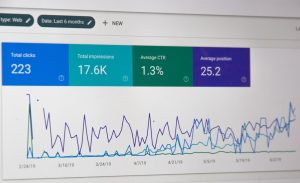Ransomware attacks have become a significant threat to organizations worldwide, with the United States being a prime target. In the past year alone, over 200 large public sector organizations in the US fell victim to these malicious attacks. The impact of these attacks has been far-reaching, affecting government agencies, educational institutions, and healthcare providers. In this article, we will delve into the details of these attacks, the industries most affected, and the implications for cybersecurity.
The Scope of the Attacks
According to cybersecurity experts Emsisoft, the targets of these ransomware attacks were primarily government organizations, educational institutions, and healthcare providers. Their research, based on publicly available reports, disclosure statements, dark web leaks, and third-party intelligence, revealed that a total of 105 counties, 44 universities and colleges, 45 school districts, and 24 healthcare providers were impacted by these attacks. However, it is important to note that these numbers may not be conclusive, as not all organizations are forthcoming about cybersecurity incidents.
The Vulnerability of Public Organizations
Public sector organizations are more likely to share details of cybersecurity incidents compared to private companies. However, there is still a significant possibility that some incidents have remained undisclosed or hidden. Emsisoft acknowledges the difficulty in accurately determining the trend of these attacks, stating that “nobody knows for sure whether the number of attacks is flat or trending up or down.” The true extent of the problem may be greater than reported, with incidents potentially still unfolding at the time of the report’s publication.
Hiding the Incidents
Even with the disclosure of incidents, it is clear that some organizations are hesitant to share the full extent of the attacks they have experienced. This could be due to concerns about reputation damage, potential legal ramifications, or simply a lack of understanding of the importance of publicizing these incidents. By keeping such incidents hidden, organizations may inadvertently contribute to the perpetuation of these attacks, as other potential victims remain unaware of the risks they face.
“The reality is that nobody knows for sure whether the number of attacks are flat or trending up or down.” – Emsisoft
Industries Most Impacted
Among the sectors targeted by ransomware attacks, the government, education, and healthcare industries have been the most affected. These sectors handle sensitive and critical data, making them attractive targets for cybercriminals seeking financial gain. The potential impact on public services, citizen safety, and healthcare delivery makes these attacks particularly concerning.
Ransomware and Healthcare Providers
While ransomware operators typically refrain from attacking healthcare providers due to potential fatal outcomes, there have been instances where healthcare organizations have been targeted. One such incident involved the SickKids hospital for sick children, which was attacked by an affiliate of the LockBit ransomware group. The operator violated the group’s rules by targeting a healthcare organization, prompting the group to distance themselves from the attack and provide a decryptor. It is crucial to note that attacks on healthcare providers pose significant risks to patient safety and the integrity of medical records.
The Challenge of Spotting Trends
Despite the increasing prevalence of ransomware attacks, identifying clear trends in attack patterns remains challenging. The dynamic nature of cyber threats, the constantly evolving tactics employed by attackers, and the lack of comprehensive reporting make it difficult to determine the exact nature and scale of these attacks. Additionally, the covert nature of ransomware attacks often means that organizations only become aware of the breach after an incident occurs, hindering efforts to identify patterns or preventive measures.
The Role of Cybersecurity Measures
As the frequency and sophistication of ransomware attacks continue to rise, organizations must prioritize robust cybersecurity measures to protect their sensitive data and infrastructure. Implementing a multi-layered defense strategy that includes regular data backups, strong access controls, network segmentation, and employee training is essential. Additionally, organizations should invest in advanced threat detection and response capabilities to minimize the impact of potential attacks.
Collaborative Efforts and Legal Frameworks
Addressing the ransomware threat requires not only individual organizations to bolster their defenses but also collaborative efforts between public and private entities. By sharing threat intelligence, best practices, and lessons learned, organizations can collectively enhance their security posture. Alongside collaborative efforts, governments must establish comprehensive legal frameworks that incentivize organizations to report incidents promptly and provide support to affected entities.
Conclusion
Ransomware attacks on US public sector organizations have reached alarming levels, impacting government agencies, educational institutions, and healthcare providers across the country. The true extent of these attacks may be even greater than reported, with some incidents remaining undisclosed or hidden. The increasing frequency and complexity of these attacks necessitate a proactive and collaborative approach to cybersecurity. By implementing robust defense strategies and establishing effective legal frameworks, organizations can mitigate the risk of ransomware attacks and protect critical infrastructure and data.



No comments! Be the first commenter?